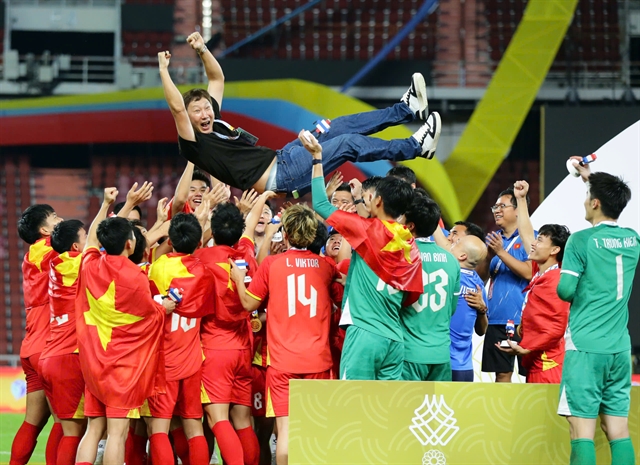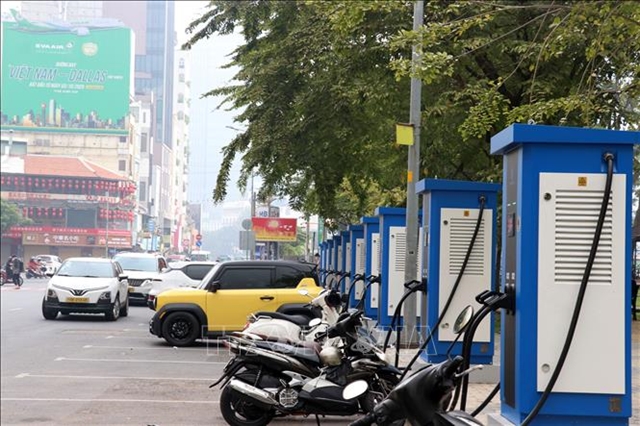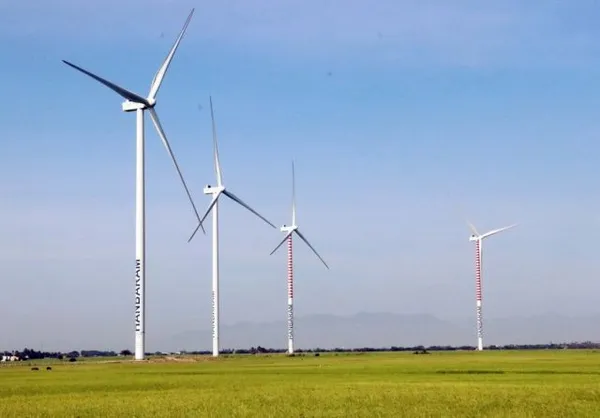 Society
Society

Vietnam Railways (VNR) has estimated it will require a staggering VNĐ8 trillion (equivalent to US$338.3 million) for the much-needed overhaul.

|
| A train leaves Kép Railway Station in the northern province of Bắc Giang. — VNA/VNS Photo Đồng Thúy |
HÀ NỘI — For years, the railway industry has grappled with the challenge of sourcing significant funds to replace outdated locomotives and carriages to meet regulatory requirements and industry standards.
Vietnam Railways (VNR) has estimated it will require a staggering VNĐ8 trillion (equivalent to US$338.3 million) for the much-needed overhaul.
Recent VNR data indicates that as of early last year, the railway sector operated 258 locomotives, 980 passenger carriages, and 4,318 freight wagons.
Based on the Government’s Decree 65/2018/NĐ-CP, which extends the period of using railway vehicles to 2025, the railway sector will have 202 locomotives, 856 passenger carriages, and 3,927 freight wagons from the beginning of next year.
By the beginning of 2025, there will be 18 locomotives and 50 passenger carriages; by 2026, only 58 locomotives, 44 passenger carriages, and 1,081 freight cars.
As of 2025, the railway sector will lack 38 locomotives, and the shortage will increase significantly in the following years.
VNR’s director, Đặng Sỹ Mạnh, said that raising a large amount of capital to replace expired vehicles is impossible in the current difficult trading situation. He added that credit loans for new transport projects were not being implemented.
Mạnh noted that no scientific research confirmed that locomotives and carriages used for 40-45 years were unsafe. Most countries do not have regulations on the term of locomotives and carriages.
He added that repairing and maintaining railway vehicles is strictly regulated. When the vehicles need repair, mechanics disassemble each part, conduct tests to determine the equipment’s status and quality, and repair or replace parts and equipment if needed. The registry organisation supervises the process.
Mạnh also stated that investing in diesel locomotives and new carriages to replace expired ones from now until 2050, when Việt Nam has committed to converting to clean fuels, would be wasteful. He said that Việt Nam's railway technology runs on diesel trains, and the gauge is 1,000mm and not electrified.
Moreover, Việt Nam has no standards or maintenance regulations for using other green fuels for locomotives. Based on this, VNR proposed that the Ministry of Transport and the Government consider amending the Railway Law 2017 by removing the term limit for railway vehicles.
Dương Hồng Anh, deputy director of the Vietnam Railways Authority, said that if the use period is extended, the country must have safety solutions, such as shortening the registration period and ensuring technical requirements.
The Ministry of Transport asked VNR to study a project of investing in 114 locomotives by 2026. VNR must propose necessary measures to improve quality control and technical safety for locomotives and carriages with a service life of over 40 years and supplement other technical checks, if any, to ensure the vehicle’s safety.
If the using term is extended, VNR must take full responsibility for the safety of the locomotives and carriages. — VNS




